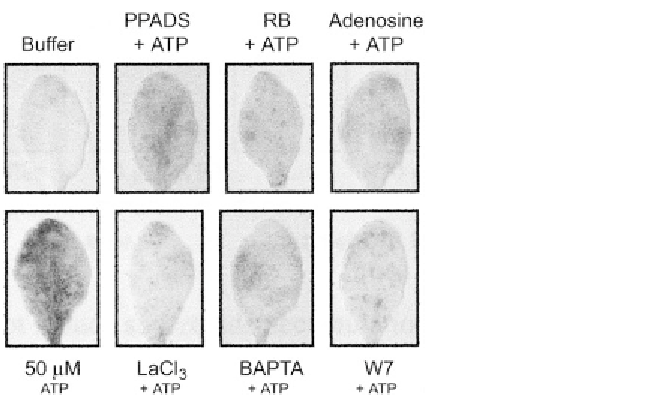Agriculture Reference
In-Depth Information
Fig. 15.3.
Inhibitors of animal P2 receptors, Ca
2+
signaling, and adenosine reduce the super-
oxide accumulation induced by ATP. Shown are images of representative
Arabidopsis
leaves
stained for superoxide production (Jabs et al. 1996) after they had been treated with buffer,
AT P, o r AT P p lu s i n h i b i to r
Genes that are induced by various stresses, including genes involved
in the biosynthesis of jasmonates and ethylene,
LOX2
and
ACS6
,respec-
tively, were up-regulated by eATP at the same micromolar concentrations
that induced superoxide production, further supporting a role for eATP
as a signal. Message abundance for
PAL1
, which is a well-studied stress-
induced and reactive oxygen species induced gene, was also increased by
eATP, and this effect was blocked by P2-receptor antagonists (Song 2004).
Taken together these results strongly suggest that the release of ATP at
wound sites can serve as an early signal to induce superoxide production
and downstream gene expression changes typically induced by the wound
stimulus. More rigorous support for this hypothesis would require testing
whether the knockout of genes encoding enzymes that could regulate the
eATP concentration at wound sites, such as ectoapyrase enzymes (Thomas
et al. 2000), alter the occurrence and intensity of signaling steps normally
induced by the wounding stimulus.
15.3
Slower Growth Response Changes Induced by eATP
Given that superoxide production can have growth regulatory effects that
can be both promotive and inhibitory of growth (Liskay et al. 2004; Mittler

Search WWH ::

Custom Search